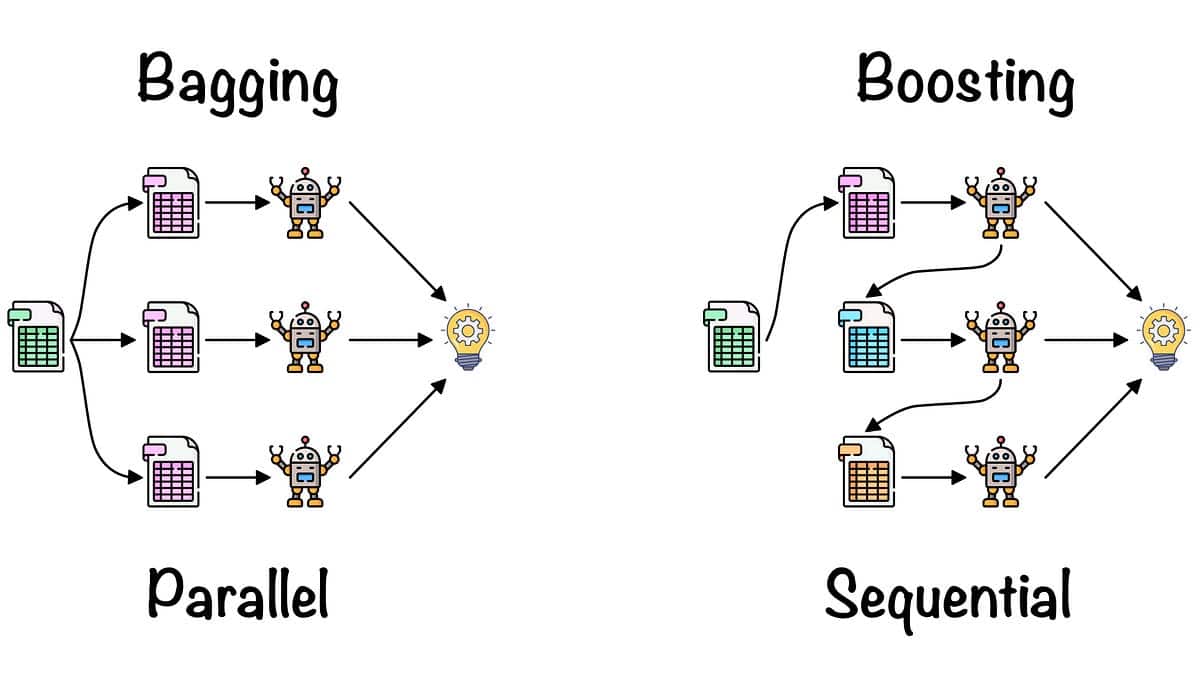Bagging, also known as Bootstrap Aggregating, is a machine learning ensemble algorithm used to improve the accuracy and stability of machine learning algorithms known as weak learners. It works by training multiple models on different randomly selected subsets of the training data and then combining all the models by taking their average (or weighted average). This improves both the accuracy and the generalization of the resulting model, which is usually considerably better than the weak learners.
Bagging was developed by Tom Breiman in 1994 and is a type of ensemble learning, which means it combines several weak learners to create one strong model. We use this method to reduce the variance of a given model, without significantly increasing its bias, as opposed to methods like boosting.
The term “bagging” comes from the idea of bagging samples from the training dataset, since different models are trained on different samples. This method is useful for different problems in the realm of machine learning, and has been applied to various algorithms such as Nave Bayes, Support Vector Machines, Decision Trees, and Regression.
The way bagging works is simple. You start off by taking a subset of the available training data. The subset size can be usually around the same size (or smaller) than the original training set. Then you create a model based on this subset. This is called a “weak learner”. This process is repeated a number of times with different subsets of the data. The final result is an ensemble of weak learners that we then call the “bagging model”. This model is then tested on unseen data and produces improved accuracy and stability compared to a single model.
Bagging is a simple yet effective method for improving the accuracy of weak learners. It is fast, scales well with data size, and is fairly easy to implement. It is one of the most widely used ensemble methods in machine learning, and is used in many popular algorithms such as Random Forest, AdaBoost, and Extra Trees.







